REWILDING LUXEMBOURG
Strategy Planning to fight wetland fragmentation in Luxembourg
This project was presented in Responsive Cities Symposium 2021 on 12 November 2021 in Barcelona, Spain.
ABSTRACT
“Rewilding” is a habitat conservation strategy concept. The last years, and as the crisis of the anthropocene keeps rising, Rewilding increasingly draws the attention of the public as it offers a strategic restoration of natural ecosystems. However, the existing rewilding practices are often established upon binary views on ecosystems, such as isolating “artificial” from “the wild” or illustrating ecosystems as “services” to human “beneficiaries” (Deary and Warren 2018). In this projetc, we aim to challenge these binary views by inviting other species to co-manage the trial fields: In the “core area”, the autonomy of other species is respected; In the “buffer area”, humans’ capability in living friendly with other species is valued and emphasized.
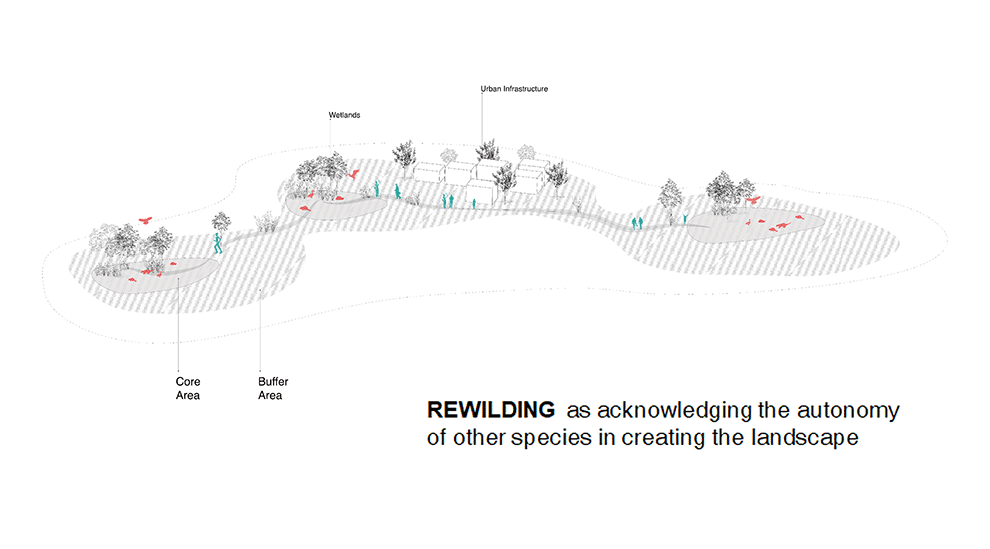

keywords: #StrategyPlanning, #Rewilding, #UrbanPlanning, #WetlandsEcosystems, #CitizenScience, #Circuitscape
INTRODUCTION
Despite being a small country, Luxembourg has the highest rate of landscape fragmentation in the European Union, due to a very low average density and a dispersed pattern of buildings and road networks. More specifically, habitat fragmentation is a significant issue under urban sprawl and highway network expansion. Among natural habitats affected, wetland are the most vulnerable ones. Thus, wetlands will be our focus trial fields.
Wetland fragmentation map and habitat loss data in Luxembourg
BEAVERS AS CROSS-SPECIES COLLABORATORS
We consider beavers (Castor fiber) as our cross-species collaborators to manage the trial fields; the wetlands. Widely known as “ecosystem engineers”, beavers can actually create significant landscape change with their spontaneous dam building behaviour. The creation of natural dams also attracts diverse species to settle, which could restore a more stable trophic chain. Our aim is to either reintroduce or attract beavers from their existing settlements to wetlands, with the help of Beaver Dam Analogue technique.
Existing beaver distribution and mechanism of Beaver Dam Analogues
In order to specify our area better, we needed to find a potential corridor for beavers and other wetland species. To do so, we firstly identified the protected wetland biotopes in order to cluster them and then, we run a simulation in Circuitscape (using Land cover as resistance map) based on these clusters as focal points.
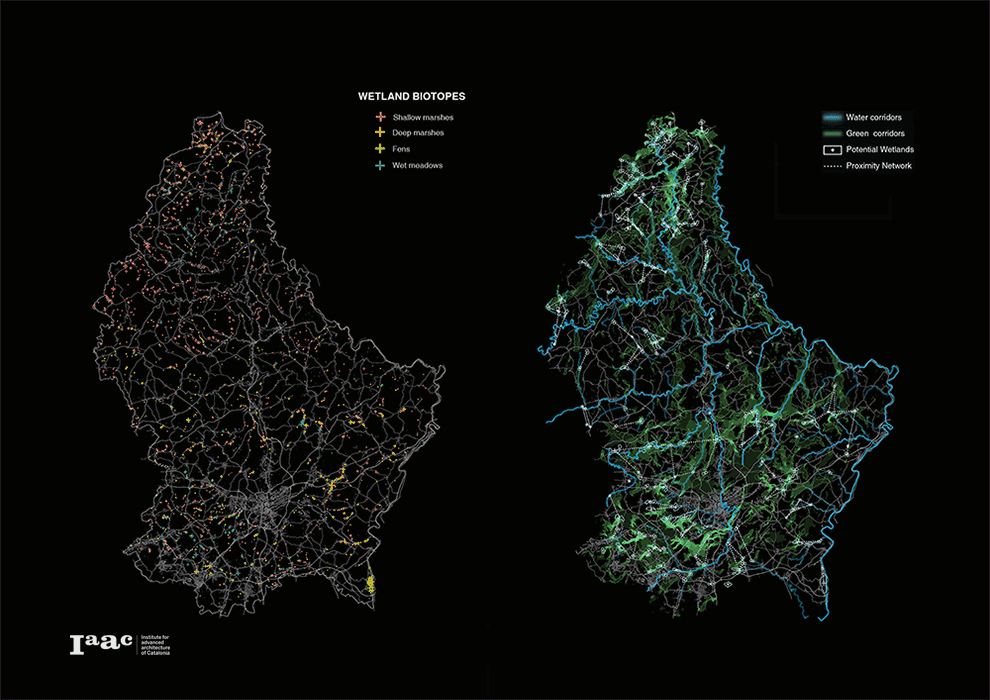
Process of simulating wetland connectivity map, area with significant green shows higher potential for beaver activities
KIDS AS HUMAN COLLABORATORS
Apart from beavers, we also identified school kids as our closest human collaborator. After the top-down initiation of our project, kids, as our primary citizen scientists, could stimulate bottom-up awareness by monitoring the whole process. Teachers are also encouraged to collaborate with other relevant parties, supporting kids and raising awareness. And once kids grow up, they themselves would be the advocates/decision makers for the new landscape they monitor and intervene, as they will be environmentally aware since a young age.
Dominant direction of influence through different types of stakeholders in project lifecycle
Based on the wetland corridors that we identified, we also mapped the pilot cities with the highest potential for cross-sector conversation. In these cities, school kids have access to both science educators and wetlands, with nature protection partners providing support to other affected stakeholders.

Luxembourg Stakeholders
SCALING DOWN | BERTRANGE AREA
In order to specify more our proposal, we scaled down to the main wetland connectivity corridor that is crossing central Luxembourg and is between most of the pilot cities from our stakeholder map. Among the cities along this corridor, we choose Bertrange municipality for more detailed analysis.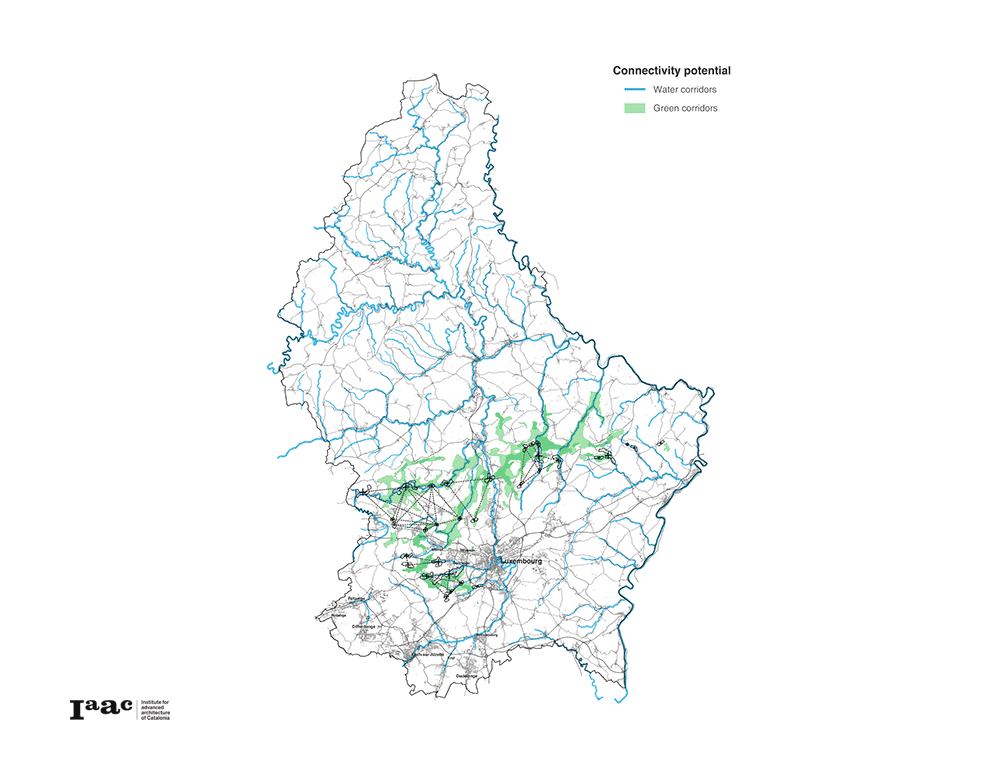
Location map of our pilot cities based on potential wetland corridors
In the Bertrange area we identified the main stakeholders that could involved in our proposal, among which teachers from education institutions, natural protection experts and land owners that will be directly reached. In order to avoid severe conflict and at the same time increase the citizen’s awareness for our project, we allocate the trial fields at the periphery of Bertrange city along River Petrusee.

Bertrange Area Stakeholders Map
BERTRANGE AREA | PROPOSAL
In the core area of our intervention, lands are initially prepared by humans with Beaver Dam Analogs, tree protection and new plantations. In the second phase, after the reintroduction of beavers, these core areas will be changed and maintained solely by beavers and other wetland species, with no human intervention.In the buffer area of our intervention, lands are actively intervened and managed by the local community and land owners, mainly by guerilla gardening, creation of pocket wetlands, maintaining wildlife corridors and wildlife road crossing tunnels.
Along with these interventions, kids are invited to observe and monitor the data as little citizen scientists. We propose an app to facilitate this process, which helps kids to see how the interventions evolve and how other species react to the interventions through time.
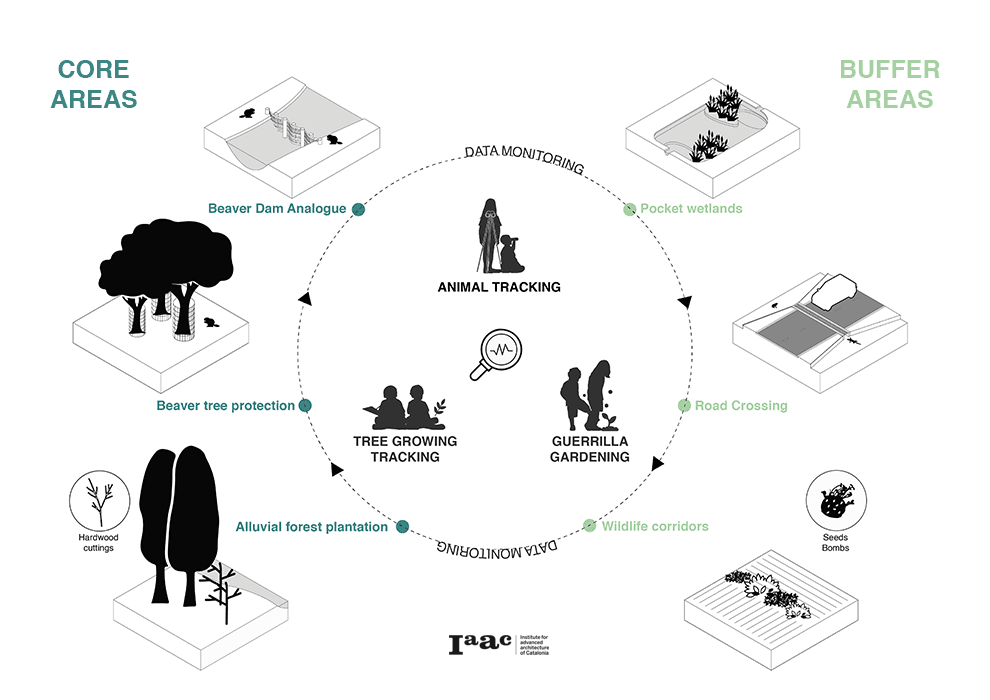
Catalogue of Interventions and App Interface
BERTRANGE AREA | ANALYSIS
Our first step was to identify the educational facilities of Bertrange and their relation to wetlands locations of the area. We identified 7 educational facilities and 14 wetland locations
Educational Facilities and Wetland Locations in Bertrange
Human Movement
Using Grasshopper, we extracted the shortest paths from each school to every wetland. The base network we used was the merge of existing road networks with the barriers of agricultural croplands of the area.Afterwards, we filtered the paths based on time and location, in order to extract the paths that can be an 1h and a 2h walk from the 3 schools that are located in the city center.

Shortest paths between the 3 schools of Bertrange city center and each wetland location
Animal Movement
In order to understand how the ecosystems of the existing wetlands will be restored and rehabilitated by other species, we needed to identify how animals could possibly be moving in our area through the wetlands. Thus, in order to extract these paths, we used Circuitscape Simulator. We assumed that these paths would be created through the agricultural croplands, so we finally concluded to our "skeleton lines" that is the possible animal movement in Bertrange.
Circuitscape analysis and skeletonisation of the animal paths
Flood Dynamics
Since we are working with beaver dams, it is important to understand the flood dynamics of the river. To achieve this, we used the CAESAR simulator before and after putting Beaver Dam Analogues in our model area. As a result, less flood flows into the city in both dry and wet seasons and more wet areas are created behind the Beaver Dam Analogues. To maximize the potential of morphological change by beavers and kids, we defined the dry season flood threshold as the boundary of core areas, while the buffer area will cover the flood threshold of wet seasons.
Ceasar Analysis of river Petrusse
Finally, combining all the previous elements, human and animal paths along with the flood limits we can identify and locate our interventions in our area.
What we considered that is important as well, is to intervene in a positive way in the intersections of these paths. Thus:
1. When animal and human paths meet, we propose the allocation of pocket wetlands and the creation of wildlife corridors,
2. Along the river in the new dams locations we suggest the tree protection and the planting of new trees that beavers prefer, and finally,
3. When roads intersect with animal paths, we propose wildlife road crossing tunnels.
The observation and the monitoring of data in the intervention points will be done by kids with the help of our app and their teachers.

Mapping the interventions
REWILDING LUXEMBOURG | A STORYLINE
We will explain how these interventions could take place through a story from Helena, a science teacher in a primary school in Bertrange.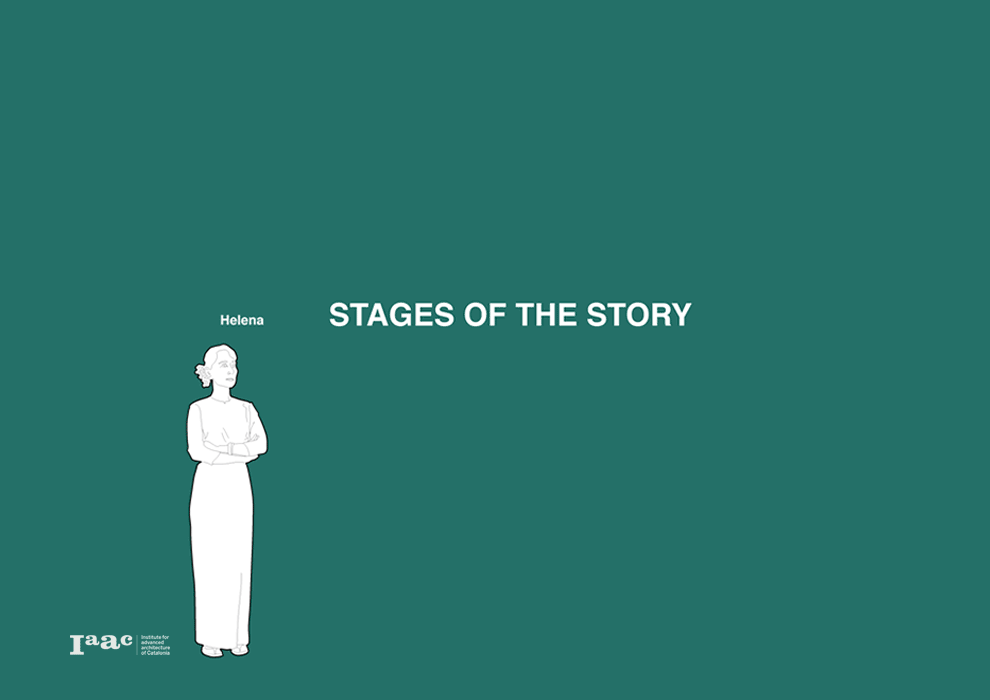
When our project initiated, Helena volunteered with other conservation workers to establish beaver dam analogues and plant trees to support beavers. In a new term next year, when beavers settle in the core area, Helena leads her pupils to the trial wetland.
She provides them with seed bombs of beaver’s favorite herbs, and asks her pupil: “How could you invite beavers to our garden with these seed bombs?”. She also introduced the use of our app, and asked pupils to record their interventions.
Each week Helena leads her pupils to the wetland observation spots on the buffer zone. She collaborates with conservation experts to help kids scientifically record beavers’ behavior and changes of their interventions. Other visitors to these observation spots are also invited to report species occurrence by time and location.
With the help of different eyes looking at the wetlands, both Helena and her pupils could get a better image of wildlife behaviors between their creation, and beaver’s creation on land.
She provides them with seed bombs of beaver’s favorite herbs, and asks her pupil: “How could you invite beavers to our garden with these seed bombs?”. She also introduced the use of our app, and asked pupils to record their interventions.
Each week Helena leads her pupils to the wetland observation spots on the buffer zone. She collaborates with conservation experts to help kids scientifically record beavers’ behavior and changes of their interventions. Other visitors to these observation spots are also invited to report species occurrence by time and location.
With the help of different eyes looking at the wetlands, both Helena and her pupils could get a better image of wildlife behaviors between their creation, and beaver’s creation on land.
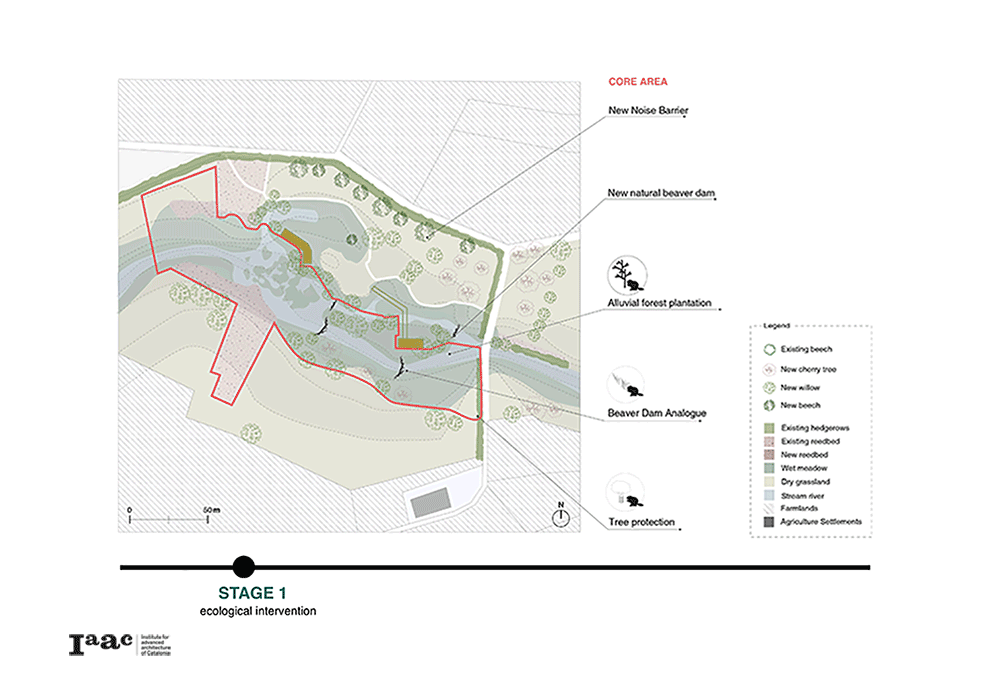
Stage 1: After one year of preparation, beavers are reintroduced to the site, creating a complex wetland matrix that inundates part of the adjacent buffer zone
Stage 2: Kids can plant in the wet experimental field the seed bombs wherever they want, while their access is restricted to the core area by notice and a row of plantings.
Stage 3: The observation spots used as key thresholds for kids and visitors to observe changes in the core zone, whereas camera trapping provides better monitoring on buffer zone.
Stage 2: Kids can plant in the wet experimental field the seed bombs wherever they want, while their access is restricted to the core area by notice and a row of plantings.
Stage 3: The observation spots used as key thresholds for kids and visitors to observe changes in the core zone, whereas camera trapping provides better monitoring on buffer zone.
CONCLUSION
We would like to conclude with our vision, where beavers in Luxembourg does not simply appear in isolated reserves, but are actively engaged in changing the landscape of human society. With the adaptive intervention and monitoring from kids and the local communities, we believe a more tolerant, non-binary coexistence could take place, with the human society being “rewilded”.
Feel free to explore the project here: Rewilding Luxembourg
Rewilding Luxembourg is a project of IAAC, Institute of Advanced Architecture of Catalonia developed at Master in City and Technology in 2020/21 by students: Alvaro Cerezo Carrizo, Arina Novikova, Dongxuan Zhu and Stefania-Maria Kousoula and faculty: Eduardo Rico, Mathilde Marengo and Iacopo Neri